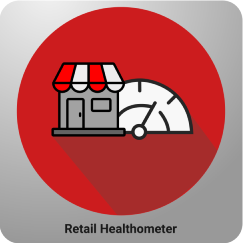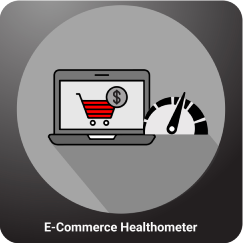Reading time: About 5 minutes
Analogically, a business plan is similar to a travel plan. In planning for a travel/trip, we take into consideration all the important aspects like locational favourability, financials, conveyance, the roads to be taken, the food supplies, the bookings, passes and permits, etc. Similarly, in a business plan, we describe how we are going to achieve our business goals.
There is an old proverb, “failing to plan is planning to fail”. It holds for eCommerce businesses as well. With eCommerce, there is a big FOMO (Fear of Missing Out) attached. People think that they will miss out on the next big idea if they do not act quickly. All starry-eyed eCommerce entrepreneurs want to become the next Zuckerberg or Elon Musk, but what they forget often is that behind the glowing success of these entrepreneurs was the good old style hard work. They built a road map, stuck to it, and kept improvising it.
For your next Facebook or Tesla, you will also need a road map or a plan to succeed. In this article, we will discuss the basics of writing an eCommerce business plan for start-ups. For a better understanding, this process can be split into a few important tasks which we shall quickly cover in this article:
- Business identity
- Market analysis
- Marketing strategy
- Financial planning
- Other Operations Details
- Executive summary
- Business identity
Giving an introduction to a company is not very different from introducing ourselves to others in formal situations. We ensure that all the information we present are correct, concise, comprehensible, and covers all the important and relevant aspects. In a business plan, we do the same thing in presenting the identity of a business entity. Such information includes:
- The name of your company
- Background information about your company
- ECommerce business type, eCommerce business model, eCommerce revenue model
- Regulatory licenses, awards and achievements
- Ownership and Leadership
- Your vision and mission statements
- The nature of business and industry
- Target market segment
- Your offerings, USP, UVP, or any strategic advantage
- Any other factual information that helps better define your company’s identity
If you writing a business plan specifically for external stakeholders, then the presentation should highlight the best you have. For example, if you have a prominent personality in the top management or your company has an outstanding USP or UVP or any strategic advantage or your company has won some prestigious awards in the recent past, then it would be ideal to highlight such information in defining and introducing your company.
Take your time and describe properly all the aspects listed above. It will help you in articulating your business idea and also help you in explaining the nitty-gritty of your business to your investors as well as other stakeholders. By ironing out the details listed above, a clear picture of your business will emerge in your mind and this will help in eliminating any errors at the initial stage itself.
- Market analysis
A market analysis report presents the attractiveness and conduciveness of a market for business with a holistic approach. If a market does not show promise, it just does not; no one can make it good if it is not good for any particular business. And if it does; a market analysis report can tell us how it so. A good market analysis should at least cover the following:
- Industry performance and trends
- Market size and the demand estimates
- Market trends
- Availability of suppliers and distributors
- Logistical ease
- Demographics and customer profiling
- Competitors and intensity of competition, the threat of new entrants
- Substitute products, emerging products
- Market-entry and exit barriers
- Economic, legal and regulatory, political, social, technological, ecological factors
- Bargaining edge
- Marketing strategy
Marketing defines the fundamental success and failure of a business idea. Marketing begins with the business idea itself and extends to how that idea can be converted into and delivered as a solution to the customers. Thus, sales/selling is only a small fragment of marketing. Marketing is better understood with the concept of marketing mix which is also known as the 7Ps of marketing. But here, we will cover only the conventional 4Ps.
- Product: A product is basically a solution to a certain set of needs and wants. A product definition should specifically answer its abilities in terms of problem-solving, need-satisfying, and desire-fulfilling. The core product of a product is the fundamental need that it fulfils. However, a product is also accompanied with essential features and most often, also with value additions. According to Philip Kotler, a product could be defined at 5 different levels.
- Core Product
- Generic Product
- Expected Product
- Augmented Product
- Potential Product
Such a detailed definition brings out a thorough assessment of a product. It can highlight the uniqueness of a product or throw light on the scope of product improvement or make necessary adjustments in the product to better suit the market requirements.
- Pricing Strategy: How you price your product/service is a significant determinant of how the current market will respond to your offering. In a business plan, your product pricing strategy must establish how it is going to benefit your business. There are many popular pricing strategies like premium pricing, penetration pricing, economy pricing, skimming strategy, etc. There are important considerations to be kept in mind while choosing a pricing strategy like cost per unit, price elasticity of demand, level of competition, product homogeneity, existing market requirements, etc.
- Promotional Strategy: In a business plan, a promotional strategy should present how a business is going to create awareness in its targeted market segment about its products and services towards the bigger goal of attracting customers’ attention and interest and eventually generate the desirable conversion (web traffic/footfall, queries, subscriptions, purchases, etc.). The key forms of promotion are:
- Advertising (television, print media, social media, billboard, SEM etc.)
- Sales Promotion (discounts, stock clearance sales, freebies, etc.)
- Personal Selling (one-to-one communication)
- Direct marketing (SMS, emails, door to door, etc.)
- Public Relations
- Place: The ‘place’ element of marketing commonly denotes the distribution strategy (of a business enterprise) i.e. how a business is planning to make the product available to customers. In a business plan, a distribution strategy should lay out the planned journey of a finished product from its source (manufacturing/assembling/becoming a final product) to its destination (retail stores, eCommerce platforms, direct customers) via intermediaries (the distribution network).
- Financial planning: We must accept that even if we have a splendid business idea it may not be commercially feasible. This is what we present in the financial part of a business plan – forecasting the financial feasibility of an intended business venture not just in the present or the near future but also in the long run. Some of the important principles, concepts and tools of financial management covered here are:
- Assessment of capital requirements, source(s) of capital, capital structuring, cost of capital, terms of repayment, etc.
- Operational expenditure budget
- Sales forecasts
- Projected cash flow
- Planning for working capital management
- Projected income statement
- Projected profit and loss statement
- Projected balance sheet
- Break-even analysis
- Ratio analysis
- Other Operations Details
Supply chain and logistics – Production-related, distribution, and returns
The organization, Human Resources, and Administration
IT and technological platforms
- Executive Summary
An executive summary is a pilot blueprint of your intended business idea. Mainly targeted at the investors, the executive summary should highlight the potential attractiveness of the business idea backed up the rest of the business plan. It should briefly cover all the important areas which could be of potential interest to investors and other stakeholders. The tone should be positive and affirmative. As a yardstick, you should consider fitting the entire executive summary in not more than two pages. An executive summary may be prepared at last but be presented at first in a business plan.
About us
Your Retail Coach (YRC) is a retail consulting and outsourcing company in India offering a wide range of services in retail offline, retail eCommerce and retail omnichannel catering to a multitude of industries.







